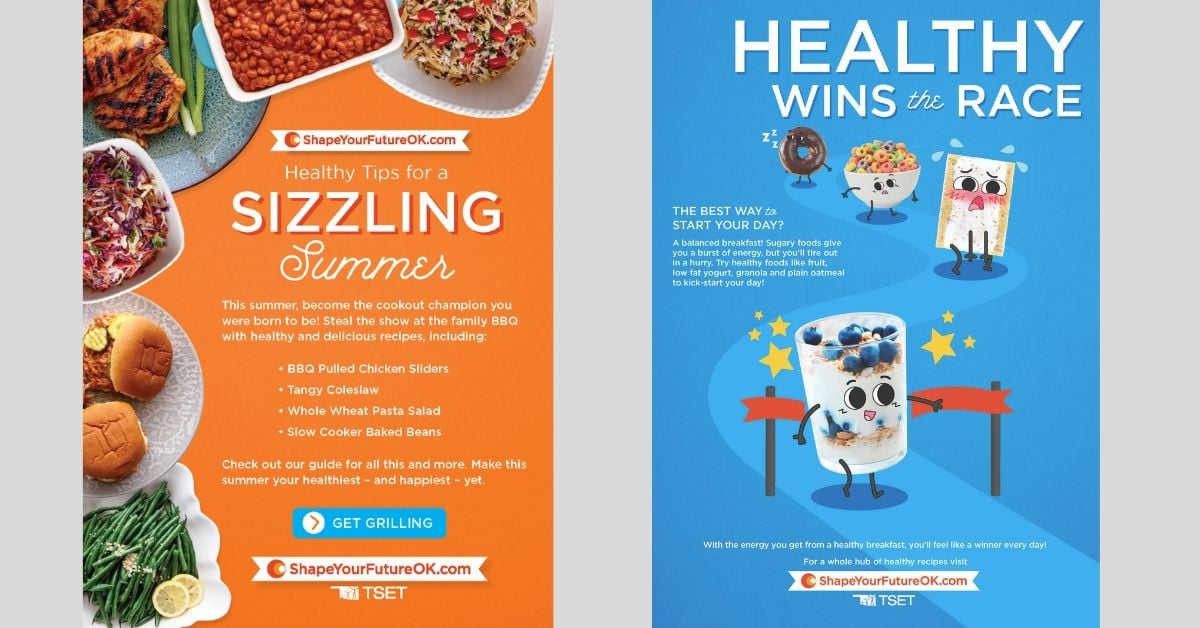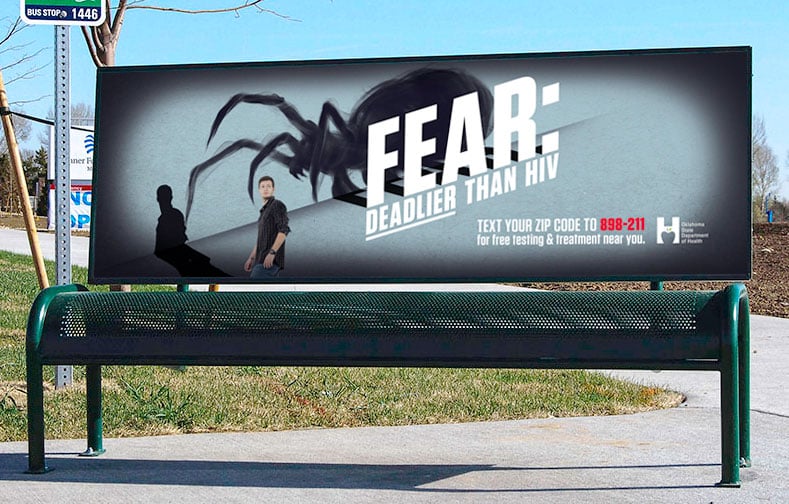
4 Ways to Use Design to Shift Social Norms and Change Behaviors
Picture this. You’re at a swanky restaurant. Your waitress approaches. She asks how you’re doing. You misinterpret this normal interaction as a cue to unload every graphic detail of your latest squabble with your husband. Next, you walk her through the play-by-play of the nightmarish parent/teacher conference you had last week. When the meal comes, you eat it with your hands…with gusto. And it’s not a sandwich.
If any of these behaviors appall you, you probably have a pretty good grasp of proper dining social norms. Social norms typically exist for a reason. Some keep us safe, like looking both ways when we cross the street. But some social norms harm us…like smoking in public places. Longstanding norms can be difficult to change. Difficult — but not impossible.
One of the ultimate goals of behavior change marketing is to shift social norms to an alternate behavior, like we’ve done with smoking. People used to smoke everywhere—in offices, restaurants and movie theaters—but over time, the presence of smoking areas has continued to dwindle steadily.
Similarly, eating healthy and getting enough exercise are not currently social norms in many parts of Oklahoma. According to the CDC, the state ranks 1st in the nation in rates of heart disease and 4th in diabetes. One of the main goals of our Shape Your Future campaign is to improve health outcomes by promoting healthier behaviors. We hope that by sending the right messages to the right audience at the right time, we can transform the social norms that are holding Oklahomans back from healthier lives.
The work we’re asking our audience to do isn’t easy. We’re asking people to swap instant gratification and pleasure for discomfort. To change their values. To confront deeply ingrained bad habits head on. To forego convenience and comfort for work that’s worthwhile, but tough. These are daunting asks, especially for creatures of habit who fear change.
Creative plays a critical role in shifting these norms and behaviors. Words matter, but so does design. People are highly visual creatures, so the design choices we make play an important role in making our asks feel less intimidating and less impossible.
4 things to keep in mind when designing a behavior change campaign:
1. KISS (Keep it simple, Stupid).
Don’t overwhelm your audience (you probably shouldn’t call them stupid, either). Information is like salt in your behavior change casserole. Both too little and too much will prompt people to turn up their noses and tune out your message. Give them one tip—not five. Instead of drowning people in hundreds of ways to “eat better” and “move more” in one long video, we dished out our tips in digestible chunks for Shape Your Future. We used short videos to demonstrate how to do a squat or how to make a quick and easy recipe to make these behavior changes feel less intimidating.

2. Keep it attainable.
Put yourself in your target’s shoes. Consider their starting point. Brainstorm on any barriers they may be facing. Role-modeling works because your target can see what these new behaviors look like in action. Take the Public Service of Oklahoma Peak Performers Campaign. We adopted an entertaining, fantastical design approach, sure, but our superhero character also demonstrated every single behavior we were asking our audience to do in a memorable way.
3. Make it real.
Your brand voice needs to be authentic if you want it to resonate with your audience. They need to feel seen and understood. Both your language and your visuals must be intentional. Audience segmentation and personas are helpful tools, but taking stereotyping too far can become problematic quickly. Dodge that bullet by getting to know your target audience well. Connect to their core values. Then, tug at their heart strings. Take the OHSO Thank You, Sean campaign. Instead of assuming a scolding, finger-wagging role, we flipped the script and praised people for the bad choices they didn’t make (and provided them with an Uber code).

4. Make it emotional.
When you’re able to elicit an emotional response from your audience, you leave a more lasting impact. In our Deadlier Than HIV Campaign, we took a nuanced, empathetic approach to harness the fear surrounding a HIV diagnosis and use it for good. This is a fear that’s crippling enough to hold people back from getting tested, and ultimately, getting access to life-saving treatment. We redirected that fear where it truly belongs: Denial. Hesitation. Apathy. We used it as a tool to shift attitudes, behaviors, and ultimately, social norms.

Unfortunately, we can’t pick our society up by its britches, flip it upside down and shake out all of its bad habits overnight. We aren’t a bully stealing our victim’s lunch money. The change we’re after is more valuable than quarters, dimes and pennies, so it’s harder to secure. Social norms are developed after years and years of repetition, but they all started as habits. When our language and design is simple, attainable, realistic and moving, it plants a seed of hope within our audience communicating that change is possible for them, too. And when they succeed, we convert them into advocates who can help us change entire norms, one by one.
Next, learn about how copywriting can influence behavior change.








